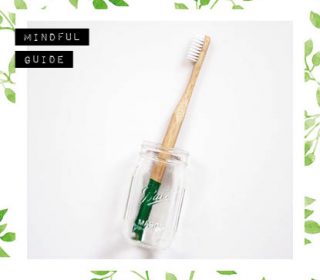Why cold water swims and showers are worth the icy plunge

Cold water immersion has garnered quite the following, with turning the temperature dial down in the shower endorsed by many because of a supposed myriad of health benefits. A nation hellbent on getting familiar with the shiver, we’re embracing the bite of our lakes and ponds more than ever before – the amount of people getting involved in open water swimming trebled during the pandemic, according to a report from Outdoor Swimmer, and sales of wetsuits have increased by almost 500%.
Not just another fad, we dive into the science behind cold water immersion, and break down why the good it does definitely outweighs those initial goosebumps.
1. WHY YOU SHOULD EMBRACE THE CHILL
COLD WATER HIGH
Being submerged in cold water brings us close to the pain barrier, and so our bodies release feel-good hormones like dopamine and endorphins, to help us cope. This adrenaline rush also stimulates a rush of the chemical norepinephrine, which helps our brain and body work at optimum efficiency, and can positively impact energy and focus hours after taking the frosty plunge.
LONG-TERM MENTAL HEALTH BENEFITS
If you want to build up your long-term resilience to stress, then getting comfortable with the cold is a great place to start. Through continually building up your tolerance of low temperatures, and fighting the body’s natural cortisol-induced reaction to flee the frost, you’ll be better armed against the effects of chronic stress and day-to-day life. Since the pandemic, cold water swimming has garnered respect amongst mental health professionals.
JUMP-START CIRCULATION
Feeling cold will trigger your heart to pump faster, so that blood can better circulate and therefore help retain body temperature, meaning you’ll experience a greater supply of oxygen to the brain and other organs. Forcing the body to work harder, you’ll also burn far more calories than if you were swimming in hotter conditions.
SCARE OFF SNIFFLES
Despite what we’ve always been told, it turns out that hanging out in frosty water actually leads to fewer coughs and colds – provided you get warm quickly afterwards, and have had your flu jab if required. This is partly due to a suspected increase in white blood cell production when immersed in cold water, but the exposure to more germs could also play a role in boosting immunity.
STIMULATE THE SPERM
Turns out that testosterone isn’t a fan of being too toasty. Put simply, the simple act of having a cold shower will lower the scrotal temperature – therefore increasing the production of testosterone, and in turn, boosting a man’s libido.
2. WHERE TO COLD WATER SWIM IN LONDON
FOR THE BRAVE BATHERS: HAMPSTEAD HEATH PONDS
At any of the Hampstead Heath ponds, you can expect freezing water, muddy banks, quite a few ducks, and natural scenery. While the Mixed Pond is only open to all in summer, the Ladies’ and Men’s Ponds are the UK’s only lifeguarded open water swimming facilities open to the public every day of the year.
What are the facilities like? Cold showers are available at both, with warm showers also available at the Ladies’ Pond. There are no lockers or supervised areas, and toilets are close by but not directly on-site.
FOR THE GET-IT-DONE DIPPERS: BROCKWELL LIDO
If you’re keen to add some sophistication to your cold swim, then head to Brockwell Lido – a true jewel you’ll find nestled in South London’s bustling Brixton. The 50-metre pool is still unheated – so the chill is bound to bite – but the stylish Grade II listed art deco building that surrounds is sure to add a little glamour to your icy excursion.
What are the facilities like? There’s great changing facilities, and a lovey poolside cafe, where you can grab a post-swim bite to eat.
FOR THE TRULY WILD WATER-BABIES: FENSHAM GREAT POND
Blissfully scenic and free as a bird, Fensham Great Pond is a 50-metre shallow lake where you’re sure to feel sand underfoot. With a sandy beach, buoyed areas for swimming, and beautiful wraparound views of the Surrey hills and open heathland. Just don’t be surprised if you find yourself floating alongside the many wildfowl, mallards and greylag geese that call it home.
What are the facilities like? None at all!
How to stay safe when cold water swimming in winter
– Join a local group for safety and never swim alone. Open water can be dangerous. Only ever swim where it is safe, and make sure you can enter and exit the water quickly and easily.
– Wear a swimming hat, neoprene gloves, booties, balaclava, or a wetsuit.
– Get in quickly, but never jump in – it takes 90-120 seconds for the initial cold-water shock to wear off
– Listen to your body and don’t stay in for too long – as the temperature drops, decrease the amount of time you spend in the water – in winter, swimmers often only swim for two minutes at a time.
– Gently exhale as you enter the water
– Bring layers – a Dry Robe is a good idea – and a warm drink and a hat for afterwards
– Warm up slowly – don’t have a hot shower. Hot water can cool your core and it can be dangerous. Instead, make sure you have plenty of warm clothes, wrap up well and have a hot drink.








